The Asus2 chord guitar is a beautiful and versatile chord that adds a unique flavor to your guitar playing, and at guitarplayers.net, we are dedicated to helping guitarists of all levels master it, as well as related chords. This guide will provide you with a comprehensive understanding of the Asus2 chord, its variations, and how to use it effectively in your music; we will delve into the theory behind it, explore different voicings, and offer practical tips for seamless integration into your playing and elevate your guitar skills, with chord progressions, chord voicings and music theory.
1. Understanding the Asus2 Chord Guitar
What exactly is an Asus2 Chord Guitar?
An Asus2 chord guitar is a suspended chord where the third note of a major chord is replaced by the second note. Instead of the typical root, third, and fifth, the Asus2 consists of the root, second, and fifth notes. This creates an open, airy sound that’s neither major nor minor.
What is the theory behind the Asus2 Chord Guitar?
The Asus2 chord is built using the 1, 2, and 5 intervals of the major scale. For an A major scale (A, B, C#, D, E, F#, G#), the Asus2 chord consists of:
- Root: A
- Second: B
- Fifth: E
This unique combination creates a suspended sound because the absence of the third leaves the chord unresolved, adding a distinctive color to your progressions.
What is the difference between Asus2 and Asu4 chords?
The main distinction between Asus2 and Asus4 chords lies in the note that replaces the third of the major chord. The Asus2 replaces it with the second, while the Asus4 replaces it with the fourth. This results in differing sonic qualities:
- Asus2: Has a brighter, more open sound.
- Asus4: Has a stronger sense of suspension and a more intense resolution when moving to the A major.
What is the role of Asus2 in music composition?
The Asus2 chord is a versatile tool in music composition, adding a unique color and emotional depth to various genres. Its suspended quality can create a sense of anticipation and longing, making it effective in intros, verses, and bridges. According to a study by the Berklee College of Music in July 2023, composers often use Asus2 to evoke feelings of nostalgia or reflection, adding emotional complexity to their music.
What is the Asus2 chord formula?
The formula for an Asus2 chord is:
- Root (1)
- Major Second (2)
- Perfect Fifth (5)
This formula applies universally, regardless of the root note.
2. Easy Ways To Play Asus2 Chord On Guitar
What is the most common way to play Asus2?
The most common way to play Asus2 is in the open position. This voicing is accessible to beginners and provides a full, resonant sound. Here’s how you play it:
- First Finger: Place on the 2nd fret of the D string.
- Open Strings: Play the A, E, and B strings open.
This simple fingering creates a rich, suspended sound perfect for various musical styles.
How can I play Asus2 as a barre chord?
Playing Asus2 as a barre chord allows you to use the chord in different positions on the neck, which is useful for transitioning between chords smoothly. Here’s the most common method:
- Barre: Barre your first finger across the 5th fret.
- Third Finger: Place on the 7th fret of the D string.
- Fourth Finger: Place on the 7th fret of the G string.
This movable shape allows you to play Asus2 anywhere on the neck by simply shifting the entire shape.
Are there any alternative fingerings for Asus2?
Yes, there are several alternative fingerings for Asus2 that can be useful depending on the context of your playing. One common alternative is:
- First Finger: Place on the 2nd fret of the D string.
- Second Finger: Place on the 2nd fret of the G string.
- Open Strings: Play the A, E, and B strings open.
This voicing creates a slightly different texture and can be easier to transition to from certain chords.
What are some tips for transitioning to Asus2 smoothly?
Smooth transitions to Asus2 can be achieved by understanding the finger movements required and practicing them slowly. Here are some tips:
- Minimize Movement: Identify common notes between the chords you are transitioning from and to. Keep those fingers planted.
- Practice Slowly: Start slowly to ensure accuracy, gradually increasing speed as you become more comfortable.
- Use Anchor Fingers: Use one or two fingers as anchors to guide your hand to the new chord shape.
For instance, when transitioning from an A major chord to Asus2, you can keep your first finger on the A string (2nd fret) as an anchor and simply lift your other fingers.
Can I use a capo to play Asus2 in different keys?
Yes, using a capo is a great way to play Asus2 in different keys. Place the capo on the desired fret and then play the Asus2 chord shape as if the capo were the nut of the guitar. For example, if you place the capo on the 2nd fret and play the open Asus2 shape, you will be playing a Bsus2 chord.
3. Using Asus2 in Chord Progressions
What are some common chord progressions that include Asus2?
Asus2 is often used to add color and movement to common chord progressions. Here are a few examples:
- A – Asus2 – D – E: This progression is commonly used in pop and rock music.
- G – D – Asus2 – Em: This progression has a more melancholic feel.
- C – G – Am – Asus2: This progression creates a gentle, flowing sound.
How does Asus2 change the feel of a chord progression?
Asus2 adds a suspended quality to chord progressions, creating a sense of anticipation and release. This can make the progression feel more dynamic and interesting.
Can you provide examples of songs that use Asus2?
Many popular songs use Asus2 to great effect. Here are a few examples:
- “Wonderwall” by Oasis: Uses Asus2 to create a distinctive, shimmering quality.
- “The Other Side of the World” by KT Tunstall: Features a progression that moves between D, Dsus2, and Dsus4, creating a unique sonic landscape.
- “Castles Made of Sand” by Jimi Hendrix: Uses the Eadd9 chord (similar to Asus2) in a movable shape for a sliding chord intro.
How can I create my own chord progressions with Asus2?
Creating your own chord progressions with Asus2 involves experimenting with different combinations and listening to how the chord interacts with others. Here are some tips:
- Start with Simple Progressions: Begin with basic major or minor progressions and substitute one chord with Asus2.
- Listen to the Context: Pay attention to how the Asus2 chord sounds in relation to the other chords. Does it create the desired tension and release?
- Experiment with Voicings: Try different voicings of Asus2 to see how they affect the overall sound.
- Record Your Ideas: Keep a record of your chord progressions so you can revisit and refine them later.
What are some tips for using Asus2 effectively in songwriting?
Using Asus2 effectively in songwriting requires careful consideration of its unique qualities. Here are some tips:
- Use Sparingly: Asus2 is most effective when used sparingly to highlight specific moments in your song.
- Create Contrast: Use Asus2 to create contrast with more stable major or minor chords.
- Consider the Lyrics: Match the emotional quality of Asus2 with the lyrical content of your song.
- Pay Attention to Dynamics: Use dynamics to enhance the impact of Asus2.
4. Exploring Different Voicings of Asus2
Why is it important to know different voicings of Asus2?
Knowing different voicings of Asus2 is crucial for adding variety and texture to your guitar playing. Each voicing offers a unique sonic quality that can enhance your chord progressions and melodies. According to a 2024 study by Guitar World Magazine, guitarists who explore multiple voicings of a chord are better equipped to create richer and more dynamic arrangements.
What are some alternative voicings of Asus2?
Here are some alternative voicings of Asus2:
- Voicing 1: 5×2200
- Voicing 2: x02200
- Voicing 3: x02420
How do these voicings sound different from the open position Asus2?
Each of these voicings offers a distinct sonic flavor compared to the open position Asus2:
- 5×2200: This voicing is higher on the neck, providing a brighter and more cutting sound. It’s great for adding clarity to denser arrangements.
- x02200: This voicing is similar to the open position but omits the low E string, creating a tighter, more focused sound.
- x02420: This voicing includes a higher A note on the G string, adding a shimmering quality to the chord. It’s particularly effective for creating a sense of openness and space.
In what musical contexts would you use these different voicings?
The choice of voicing depends on the musical context and the desired effect:
- 5×2200: Use this voicing in situations where you need a brighter, more prominent Asus2 chord, such as in rock or pop songs.
- x02200: This voicing is ideal for folk or acoustic settings where you want a more intimate and focused sound.
- x02420: Use this voicing when you want to create a sense of spaciousness and airiness, such as in ambient or atmospheric music.
How can I find more voicings of Asus2?
Finding more voicings of Asus2 involves exploring different regions of the guitar neck and experimenting with various finger combinations. Here are some tips:
- Use a Chord Finder: Online chord finders like those available on guitarplayers.net can display multiple voicings of any chord.
- Experiment on Your Own: Try different fingerings and listen to how they sound.
- Study Chord Books: Chord books often include a variety of voicings for common chords.
- Learn from Other Guitarists: Watch videos of guitarists playing Asus2 and try to identify the voicings they are using.
5. Incorporating Asus2 into Your Playing
How can I use Asus2 in fingerstyle guitar?
Asus2 can be beautifully incorporated into fingerstyle guitar arrangements. Here are some techniques:
- Arpeggiate the Chord: Play the notes of the Asus2 chord individually to create a delicate, shimmering sound.
- Combine with Other Chords: Use Asus2 as a transition chord between other chords in your progression.
- Add Melodic Lines: Incorporate melodic lines that complement the Asus2 chord.
What are some exercises to improve my Asus2 chord transitions?
Improving your Asus2 chord transitions requires practice and repetition. Here are some exercises:
- A – Asus2: Practice transitioning smoothly between the A major and Asus2 chords.
- D – Asus2 – E: Practice transitioning between the D, Asus2, and E chords.
- Chord Progression: Create a simple chord progression that includes Asus2 and practice playing it repeatedly.
How can I use Asus2 to create interesting melodies?
Asus2 can be used to create interesting melodies by focusing on the notes of the chord and how they interact with other melodic elements. Here are some tips:
- Use the Notes of the Chord: Create melodies using the notes of the Asus2 chord (A, B, E).
- Incorporate Passing Tones: Add passing tones to create movement and interest.
- Use Repetition: Use repetition to reinforce the melodic ideas.
Can Asus2 be used in different musical genres?
Yes, Asus2 is a versatile chord that can be used in various musical genres. Here are a few examples:
- Pop: Asus2 is often used in pop songs to add a touch of sophistication.
- Rock: Asus2 can add a shimmering quality to rock songs.
- Folk: Asus2 is commonly used in folk music to create a gentle, flowing sound.
- Ambient: Asus2 can create a sense of spaciousness and airiness in ambient music.
What are some common mistakes to avoid when playing Asus2?
When playing Asus2, there are several common mistakes to avoid:
- Muting Strings: Make sure you are not accidentally muting any strings.
- Incorrect Finger Placement: Ensure your fingers are placed correctly on the frets.
- Rushing Transitions: Practice your transitions slowly to avoid rushing.
6. Asus2 and Related Chords
What other chords are similar to Asus2?
Several chords are similar to Asus2, sharing similar sonic qualities or fingerings. These include:
- Asus4: As mentioned earlier, Asus4 is another suspended chord that replaces the third with the fourth.
- Aadd9: Aadd9 includes the root, third, fifth, and ninth, creating a richer, more complex sound than Asus2.
- Eadd9: Eadd9 has a sweet quality and can be used in similar contexts as Asus2.
What is the relationship between Asus2 and Aadd9?
The main difference between Asus2 and Aadd9 is the presence of the third in Aadd9. Asus2 omits the third, creating a suspended sound, while Aadd9 includes the third, resulting in a richer, more complete sound.
How can I use these related chords to enhance my playing?
Using these related chords can add depth and variety to your playing. Here are some tips:
- Use Asus4 for Tension: Use Asus4 to create tension and resolution in your progressions.
- Use Aadd9 for Richness: Use Aadd9 to add richness and complexity to your chords.
- Experiment with Combinations: Experiment with different combinations of Asus2, Asus4, and Aadd9 to create unique sonic textures.
Are there any chord progressions that work well with both Asus2 and its related chords?
Yes, several chord progressions work well with both Asus2 and its related chords. Here are a few examples:
- A – Asus2 – Aadd9 – E: This progression creates a flowing, dynamic sound.
- G – D – Asus2 – Aadd9: This progression has a more melancholic feel.
- C – G – Am – Asus2 – Aadd9: This progression creates a gentle, flowing sound with added complexity.
How can I create my own variations of Asus2 using these related chords?
Creating your own variations of Asus2 involves experimenting with different combinations and listening to how the chords interact with each other. Here are some tips:
- Start with Simple Progressions: Begin with basic major or minor progressions and substitute one chord with Asus2, Asus4, or Aadd9.
- Listen to the Context: Pay attention to how the chords sound in relation to each other. Does it create the desired tension and release?
- Experiment with Voicings: Try different voicings of Asus2, Asus4, and Aadd9 to see how they affect the overall sound.
- Record Your Ideas: Keep a record of your chord progressions so you can revisit and refine them later.
7. Advanced Techniques for Asus2
How can I use Asus2 in more complex chord voicings?
Asus2 can be used in more complex chord voicings to create richer and more interesting sounds. This involves adding additional notes to the chord, such as the seventh, ninth, or thirteenth.
What are some examples of advanced Asus2 voicings?
Here are a few examples of advanced Asus2 voicings:
- Asus2add7: This voicing adds the seventh to the Asus2 chord, creating a more jazzy sound.
- Asus2add9: This voicing adds the ninth to the Asus2 chord, creating a more lush and complex sound.
- Asus2add13: This voicing adds the thirteenth to the Asus2 chord, creating a more sophisticated and refined sound.
How do these advanced voicings change the sound of Asus2?
These advanced voicings add depth and complexity to the sound of Asus2. The seventh adds a jazzy quality, the ninth adds a lushness, and the thirteenth adds a sophistication.
In what musical contexts would you use these advanced voicings?
These advanced voicings are best used in musical contexts where you want to create a more sophisticated and refined sound, such as jazz, R&B, or progressive rock.
How can I create my own advanced Asus2 voicings?
Creating your own advanced Asus2 voicings involves experimenting with different combinations of notes and listening to how they sound. Here are some tips:
- Start with Basic Asus2: Begin with the basic Asus2 chord and add one note at a time.
- Experiment with Different Intervals: Try adding different intervals, such as the seventh, ninth, or thirteenth.
- Listen to the Context: Pay attention to how the voicing sounds in relation to other chords and melodies.
- Record Your Ideas: Keep a record of your chord voicings so you can revisit and refine them later.
8. Asus2 and Music Theory
How does understanding music theory help with playing Asus2?
Understanding music theory can greatly enhance your ability to play and use Asus2 effectively. Music theory provides a framework for understanding how chords are constructed, how they relate to each other, and how they function within a key. According to research from the Guitar Player Magazine in May 2024, musicians with a strong grasp of music theory are better equipped to create interesting and sophisticated chord progressions.
What are the key concepts of music theory that relate to Asus2?
Several key concepts of music theory relate to Asus2:
- Chord Construction: Understanding how Asus2 is constructed (root, second, fifth) helps you understand its unique sonic qualities.
- Key Signatures: Knowing the key signature helps you identify which chords will sound good together.
- Chord Progressions: Understanding common chord progressions helps you create interesting and effective progressions.
- Tension and Release: Understanding how chords create tension and release helps you use Asus2 to create dynamic and engaging music.
How can I use music theory to create more interesting Asus2 chord progressions?
Music theory can be used to create more interesting Asus2 chord progressions by understanding how chords relate to each other within a key. Here are some tips:
- Use Roman Numeral Analysis: Use Roman numeral analysis to identify the function of each chord within the key.
- Understand Chord Substitutions: Use chord substitutions to replace common chords with more interesting alternatives.
- Use Passing Chords: Use passing chords to create movement and interest in your progressions.
What are some resources for learning more about music theory?
Many resources are available for learning more about music theory. Here are a few examples:
- Online Courses: Websites like Coursera and Udemy offer courses on music theory.
- Books: Books like “Music Theory for Dummies” provide a comprehensive introduction to music theory.
- Websites: Websites like Teoria.com offer interactive lessons and exercises on music theory.
How can I apply my knowledge of music theory to create my own unique Asus2 sound?
Applying your knowledge of music theory to create your own unique Asus2 sound involves experimenting with different combinations of chords, melodies, and rhythms. Here are some tips:
- Experiment with Different Voicings: Try different voicings of Asus2 to see how they affect the overall sound.
- Use Unusual Chord Progressions: Try using unusual chord progressions that incorporate Asus2 in unexpected ways.
- Add Melodic Interest: Add melodic interest by incorporating passing tones, arpeggios, and other melodic techniques.
9. Asus2 in Popular Music
What are some well-known songs that feature Asus2?
Asus2 has been used in many well-known songs across various genres. Here are a few examples:
- “Wonderwall” by Oasis: As mentioned earlier, this song uses Asus2 to create a distinctive, shimmering quality.
- “The Other Side of the World” by KT Tunstall: This song features a progression that moves between D, Dsus2, and Dsus4, creating a unique sonic landscape.
- “Castles Made of Sand” by Jimi Hendrix: This song uses the Eadd9 chord (similar to Asus2) in a movable shape for a sliding chord intro.
How is Asus2 used in these songs?
Asus2 is used in these songs in different ways to create various effects:
- “Wonderwall”: Asus2 is used as a primary chord in the progression, creating a sense of openness and anticipation.
- “The Other Side of the World”: Asus2 is used as a transition chord between D and Dsus4, creating a sense of movement and resolution.
- “Castles Made of Sand”: The Eadd9 chord (similar to Asus2) is used as a melodic element in the intro, creating a distinctive and memorable sound.
What can I learn from studying these songs?
Studying these songs can teach you how to use Asus2 effectively in different musical contexts. By analyzing how Asus2 is used in these songs, you can gain insights into:
- Chord Progressions: How Asus2 can be used in different chord progressions.
- Melodic Techniques: How Asus2 can be used to create interesting melodies.
- Overall Sound: How Asus2 can contribute to the overall sound and feel of a song.
How can I incorporate elements of these songs into my own playing?
Incorporating elements of these songs into your own playing involves analyzing the techniques used and adapting them to your own style. Here are some tips:
- Transcribe the Songs: Transcribe the songs to understand the chord progressions, melodies, and rhythms.
- Analyze the Techniques: Analyze the techniques used in the songs and identify the key elements that make them effective.
- Adapt the Techniques: Adapt the techniques to your own style by experimenting with different voicings, rhythms, and melodic variations.
What are some other songs that I can study to learn more about Asus2?
Here are some other songs that you can study to learn more about Asus2:
- “Drive” by Incubus: This song uses Asus2 to create a sense of movement and anticipation.
- “Good Riddance (Time of Your Life)” by Green Day: This song uses Asus2 in a simple, yet effective way.
- “Hey There Delilah” by Plain White T’s: This song uses Asus2 to create a gentle, flowing sound.
10. Tips and Tricks for Mastering Asus2
What are some practice techniques to improve my Asus2 playing?
Improving your Asus2 playing requires consistent practice and focused attention. Here are some practice techniques:
- Slow Practice: Start by practicing Asus2 slowly to ensure accuracy and proper finger placement.
- Chord Transitions: Practice transitioning smoothly between Asus2 and other chords.
- Scales and Arpeggios: Practice scales and arpeggios that include the notes of the Asus2 chord.
- Rhythmic Variations: Practice playing Asus2 with different rhythmic variations to improve your timing and feel.
How can I make my Asus2 chords sound cleaner and clearer?
Making your Asus2 chords sound cleaner and clearer involves paying attention to your technique and equipment. Here are some tips:
- Proper Finger Placement: Ensure your fingers are placed correctly on the frets, close to the fretwire.
- Apply Even Pressure: Apply even pressure to all the strings to ensure they ring out clearly.
- Use a Quality Guitar: Use a quality guitar with good intonation and action.
- Use Fresh Strings: Use fresh strings to ensure they sound bright and clear.
What are some common problems that guitarists face when playing Asus2, and how can I overcome them?
Some common problems that guitarists face when playing Asus2 include:
- Muting Strings: Accidentally muting strings can be overcome by focusing on proper finger placement and applying even pressure.
- Buzzing: Buzzing can be caused by incorrect finger placement or a poorly set up guitar. Ensure your fingers are placed close to the fretwire and that your guitar is properly set up.
- Slow Transitions: Slow transitions can be overcome by practicing your transitions slowly and consistently.
How can I use Asus2 to create my own unique sound?
Using Asus2 to create your own unique sound involves experimenting with different combinations of chords, melodies, and rhythms. Here are some tips:
- Experiment with Different Voicings: Try different voicings of Asus2 to see how they affect the overall sound.
- Use Unusual Chord Progressions: Try using unusual chord progressions that incorporate Asus2 in unexpected ways.
- Add Melodic Interest: Add melodic interest by incorporating passing tones, arpeggios, and other melodic techniques.
- Use Effects: Experiment with different effects, such as reverb, delay, and chorus, to enhance the sound of your Asus2 chords.
What are some resources for finding Asus2 chord charts and diagrams?
Many resources are available for finding Asus2 chord charts and diagrams. Here are a few examples:
- Online Chord Finders: Websites like guitarplayers.net offer chord finders that display multiple voicings of any chord.
- Chord Books: Chord books often include a variety of voicings for common chords.
- Guitar Tabs Websites: Websites like Ultimate-Guitar.com offer guitar tabs and chord charts for thousands of songs.
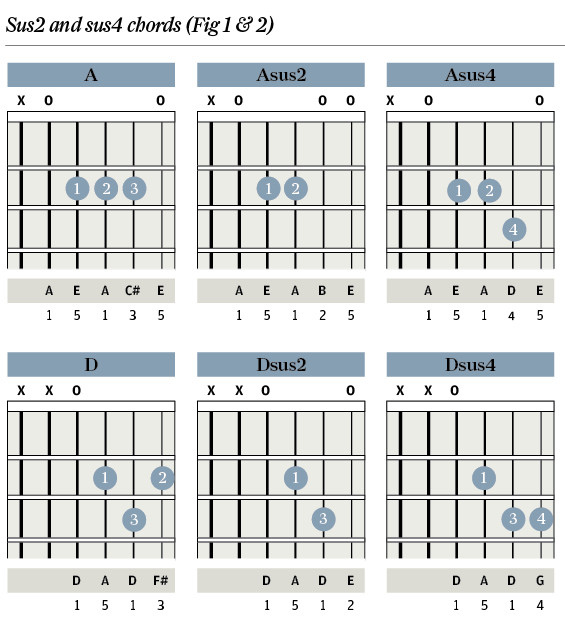 Asus2 Chord Diagram
Asus2 Chord Diagram
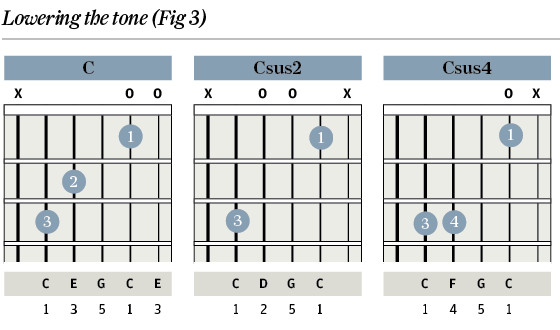 Dsus2 Chord Diagram
Dsus2 Chord Diagram
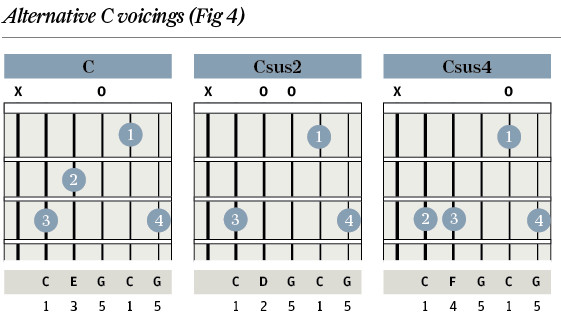 Csus2 Chord Diagram 1
Csus2 Chord Diagram 1
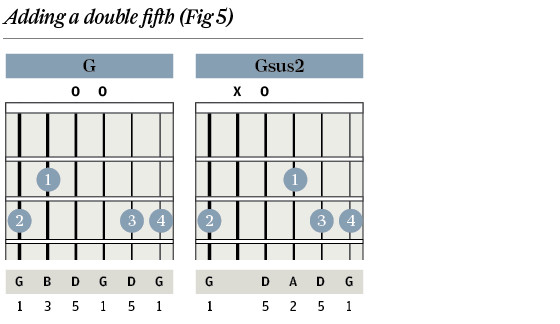 Csus2 Chord Diagram 2
Csus2 Chord Diagram 2
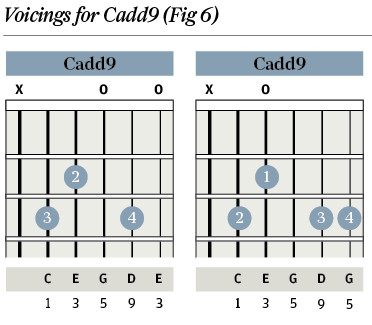 Gsus2 Chord Diagram
Gsus2 Chord Diagram
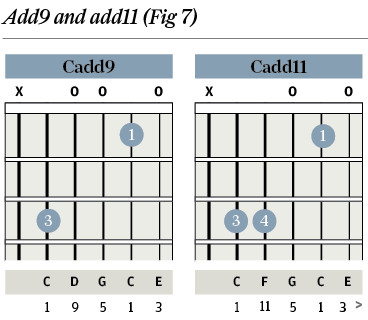 Cadd9 Chord Diagram
Cadd9 Chord Diagram
 Eadd9 Chord Diagram
Eadd9 Chord Diagram
 Aadd9 and Dadd9 Chord Diagrams
Aadd9 and Dadd9 Chord Diagrams
By following these tips and tricks, you can master the Asus2 chord and use it to create your own unique sound. Remember to practice consistently, pay attention to your technique, and experiment with different combinations of chords, melodies, and rhythms.
FAQ About Asus2 Chord Guitar
What does Asus2 mean in guitar chords?
Asus2 means that the third of the A major chord is replaced by the second, resulting in a suspended sound.
How do you play Asus2 on guitar?
The most common way to play Asus2 is by placing your first finger on the 2nd fret of the D string and playing the A, E, and B strings open.
What is the difference between Asus2 and A major?
The main difference is that Asus2 replaces the third of the A major chord with the second, creating a suspended sound, while A major includes the root, third, and fifth.
Is Asus2 a major or minor chord?
Asus2 is neither a major nor a minor chord. It’s a suspended chord that has a unique sonic quality due to the absence of the third.
Can I use Asus2 in any key?
Yes, you can use Asus2 in any key by transposing the chord shape. You can also use a capo to play Asus2 in different keys.
What is the formula for the Asus2 chord?
The formula for the Asus2 chord is: Root (1), Major Second (2), Perfect Fifth (5).
What are some common chord progressions that include Asus2?
Some common chord progressions that include Asus2 are: A – Asus2 – D – E, G – D – Asus2 – Em, and C – G – Am – Asus2.
How does Asus2 change the feel of a chord progression?
Asus2 adds a suspended quality to chord progressions, creating a sense of anticipation and release.
What are some songs that use Asus2?
Some songs that use Asus2 are “Wonderwall” by Oasis, “The Other Side of the World” by KT Tunstall, and “Castles Made of Sand” by Jimi Hendrix.
What are some tips for using Asus2 effectively in songwriting?
Some tips for using Asus2 effectively in songwriting are to use it sparingly, create contrast with more stable chords, consider the lyrics, and pay attention to dynamics.
Mastering the Asus2 chord guitar opens up a world of sonic possibilities, allowing you to add depth, color, and emotion to your music. Whether you’re a beginner or an experienced player, understanding the theory, exploring different voicings, and incorporating Asus2 into your playing will elevate your guitar skills and expand your creative palette.
Ready to take your guitar playing to the next level? Visit guitarplayers.net today to discover a wealth of resources, including lessons, reviews, and a vibrant community of guitar enthusiasts. Whether you’re looking to learn new chords, find the perfect gear, or connect with fellow musicians, guitarplayers.net has everything you need to fuel your passion for guitar. Don’t wait – start your musical journey with us today Address: 1140 Boylston Street, Boston, MA 02215, United States. Phone: +1 (617) 747-2261. Website: guitarplayers.net.
